Understanding Liver Spots: Causes and Management
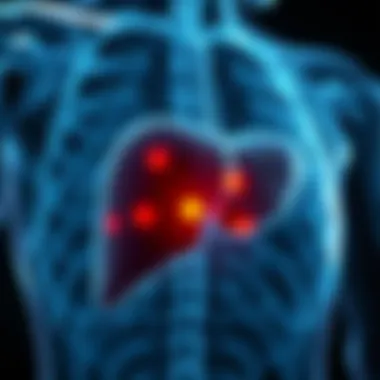
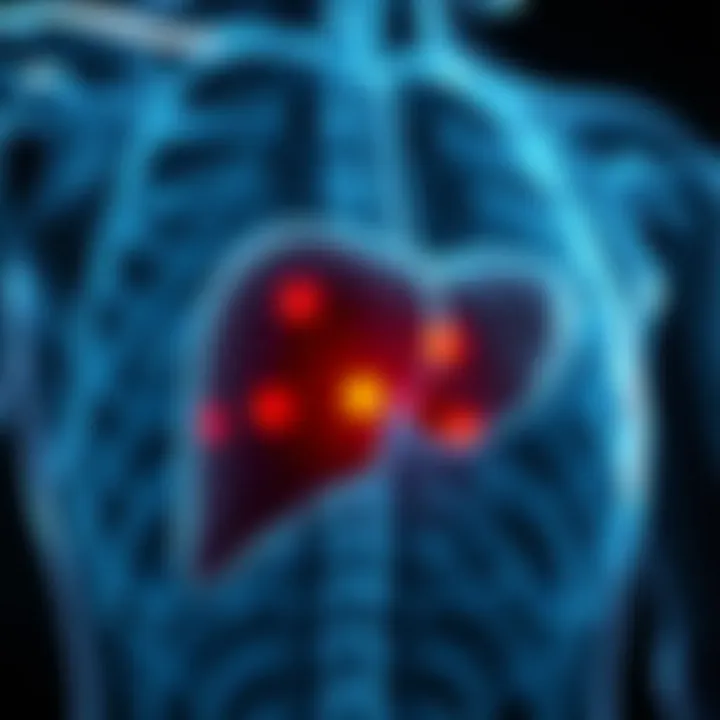
Intro
Spots on the liver can evoke concern, often leading individuals straight to a web search. The term itself can cause alarm, as these spots, or lesions as they are often called, may carry a wide range of implications for health. Ranging from harmless conditions to serious diseases, the existence of a spot on the liver requires thorough understanding and careful evaluation.
One might ask, why should one care about these spots? The truth is, they can provide significant insight into one’s overall liver condition. Knowing the difference between a benign and malignant lesion is crucial for managing one's health. Thus, this article spotlights the importance of identifying liver spots and what they signify.
In the sections to follow, we'll delve deeper into the types of lesions, the causes behind their formation, and various diagnostic methods used in the field. We’ll also explore treatment options and when to seek medical attention. Understanding this landscape is vital for students, researchers, educators, and professionals in the healthcare field.
So buckle up as we take a comprehensive look at this intricate subject, aiming to offer readers substantial insight into liver health.
Prelude to Liver Health
Liver health can't be overstated when discussing overall well-being. This vital organ is often overlooked until something goes awry, such as spotting on its surface. Here, we aim to unravel the complexities surrounding liver spots, emphasizing their significance in the realm of liver health.
A healthy liver is a cornerstone of bodily function, influencing digestion, metabolism, and detoxification. When issues with the liver arise, they can have a ripple effect across various other systems in the body. Understanding the health of this organ empowers individuals to make informed choices about their health.
The Importance of the Liver
The liver is like a one-person army, juggling numerous critical tasks under the radar. Not only does it detoxify blood by filtering out harmful substances, but it also produces bile, which aids in digestion. Furthermore, the liver plays a crucial role in managing blood sugar levels, storing essential vitamins, and even producing proteins necessary for blood clotting. Without a properly functioning liver, the consequences can range from subtle disruptions to severe health crises.
Being cognizant of liver health goes beyond mere survival; it enables one to thrive. For instance, a well-maintained liver can improve energy levels and boost the immune system, laying the groundwork for a vigorous life. On the flip side, neglecting liver health could lead to conditions like fatty liver disease or cirrhosis, which can be hazardous.
Overview of Liver Functions
To grasp the importance of monitoring liver health, it helps to know what this organ actually does. Here are some of its primary functions:
- Metabolism Regulation: The liver transforms carbohydrates, fats, and proteins into energy, a process pivotal for life.
- Detoxification: It removes toxic substances from the bloodstream, including medications and alcohol, safeguarding overall health.
- Bile Production: Bile produced by the liver is essential for digesting fats, making it a crucial ally in nutrient absorption.
- Vitamin Storage: The liver stores vital vitamins like A, D, E, and K, along with local mineral reserves like iron, ensuring the body has what it needs when it needs it.
- Blood Clotting Factors: It synthesizes crucial proteins that help blood clot, making the liver pivotal for wound healing.
In summary, recognizing the importance of liver health sets the stage for understanding the implications of liver spots, their causes, and the measures necessary for effective management. As we delve deeper into the topic, we'll uncover the layers of complexity associated with spots on the liver, providing valuable insights that could influence health pathways.
"The liver is our body's natural filtration system; keeping it healthy is fundamental."
For more detailed information on liver function, you can check Wikipedia or for ongoing research discussions, visit Reddit.
The journey into understanding liver health begins now, paying heed to the potential signs like spots that could indicate deeper health matters.
What is a Spot on the Liver?
A spot on the liver can stir a whirlwind of concern for many individuals. Understanding what these spots represent and their potential implications is paramount for maintaining liver health. Not all spots are malignant, and distinguishing between types can influence the management and outcome significantly. In this section, we will explore definitions, classifications, and methods for detecting liver spots.
Definition and Types of Liver Spots
Understanding the nature and types of liver spots can empower patients and healthcare providers alike. Familiarizing oneself with the variations, both benign and malignant, aids in determining treatment paths and the possible need for monitoring.
Liver Hemangiomas
Liver hemangiomas are benign tumors, often identified as a collection of blood vessels. Usually asymptomatic, they are often discovered incidentally during imaging for unrelated issues. The key characteristic of hemangiomas is their vascular nature, which can make them appear more prominent on ultrasound and MRI. Their generally innocuous nature makes them a common topic of discussion regarding liver health.
However, while they don’t typically require treatment, large hemangiomas may cause abdominal pain or discomfort. Consequently, most patients can breathe easier with done reassurance, as these lesions rarely transform into more serious complications.
Hepatic Adenomas
Hepatic adenomas are another type of benign liver lesion, predominantly found in women, particularly those on hormonal therapy, such as birth control pills. The unique feature of hepatic adenomas is their link to hormonal factors, which highlights the importance of monitoring these lesions, especially if they grow larger than five centimeters.
They may present a risk of rupture and bleeding, making their management more delicate compared to hemangiomas. The awareness of their potential complications means healthcare professionals may recommend surgical intervention, but often, simply monitoring is sufficient, provided there are no alarming symptoms.
Liver Cysts
Liver cysts are fluid-filled sacs that can manifest in the liver. Most cysts are benign and reduce any cause for alarm. The distinctive characteristic is their fluid content, often leading to no symptoms unless they become sizeable. Typically, these cysts are uncomplicated and often resolved on their own; however, larger cysts could necessitate further investigation.
Patients may be relieved to know that surgical options are usually reserved for symptomatic cases, where interventions only become necessary when quality of life deteriorates due to associated discomfort.
Hepatocellular Carcinoma
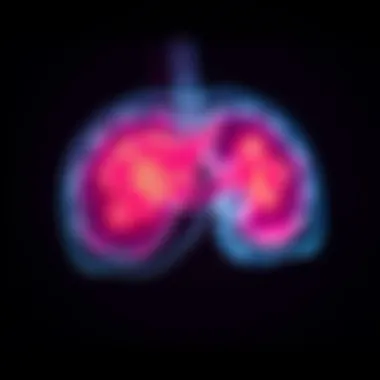
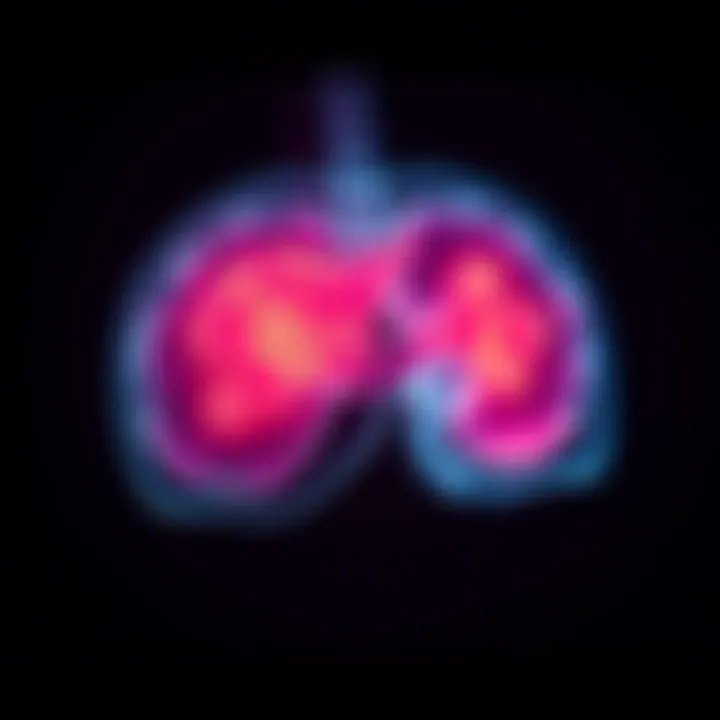
Hepatocellular carcinoma, on the other hand, is a primary malignant tumor of the liver. Its key characteristic is its aggressive nature and association with chronic liver disease, such as cirrhosis or hepatitis infections. This type of lesion is alarming and typically prompts immediate evaluation and intervention.
The unique feature of hepatocellular carcinoma is its potential to metastasize, making it crucial for patients with risk factors to undergo regular screenings. The implications of identifying this condition are extensive, as early detection can significantly improve treatment outcomes and survival rates.
How Spots Are Detected
Detecting spots on the liver is a multi-step process, combining various medical technologies and assessments. Understanding how they are identified plays a fundamental role in subsequent management.
Imaging Techniques
Imaging techniques are the cornerstone of identifying liver spots. Procedures like ultrasound, CT scans, and MRIs provide valuable insights into the liver's structure. The significance of imaging lies in its ability to reveal not just the spots but also their size and potential invasiveness.
These tools help delineate between different types of lesions and assist in planning further steps. For example, MRI is often preferred for its superior detail in soft-tissue contrast. However, imaging isn't foolproof, and sometimes, specific lesions might still require deeper investigation.
Biopsies and Further Testing
When imaging results are inconclusive, biopsies may be necessary. A biopsy involves taking a small tissue sample from the liver to analyze it for malignant cells or to confirm a diagnosis. This method is vital, especially in cases where liver cancer is suspected.
The careful extraction of tissue can provide a definitive diagnosis, helping determine the most effective treatment plan. Although a biopsy can be invasive and carries a small risk of complications, its benefits often outweigh these risks, providing crucial information that helps frame the subsequent management and prognosis for the patient.
Understanding the nature of liver spots clearly illuminates the pathways to better management and informed choices.
Causes of Liver Spots
Understanding the causes behind liver spots is crucial to making sense of this complex health matter. Identifying whether the spots are benign or malignant can greatly influence the next steps in medical care. Several factors contribute to the formation of these spots, and it’s essential to distinguish between them to ensure appropriate management. Through this lens, we can not only enhance our awareness but also empower ourselves in discussions with healthcare providers regarding what these spots imply for our overall health.
Benign Causes
Hormonal Factors
Hormonal factors offer an intriguing glimpse into the world of liver health. These factors, primarily influenced by fluctuations in hormones during various life stages, particularly in women, can lead to lesions that may appear as spots on the liver. Hormonal changes during pregnancy or birth control use can sometimes trigger the formation of liver hemangiomas, a common type of benign liver spot.
The key characteristic of hormonal influence on liver spots lies in the fact that they are often harmless and may even resolve on their own over time. This makes awareness of this cause particularly relevant for individuals concerned about the implications of what they see on scans. However, it's important to note that while these spots are typically benign, any changes should still prompt medical evaluation to rule out more serious conditions.
The unique aspect of recognizing hormonal factors is that it presses us to consider not just the event itself but the body's broader hormonal milieu. This awareness can aid individuals in discussing their health with medical professionals, ultimately leading to better patient outcomes.
Congenital Anomalies
Congenital anomalies refer to conditions that are present at birth. They might not be immediately apparent, but they can manifest later in life in the form of liver spots. For example, certain vascular anomalies can appear as benign spots on imaging studies, often noted incidentally.
One significant characteristic of congenital anomalies is their nature of being developmental rather than acquired. This aspect often reassures individuals since these spots tend to be non-progressive. The major advantage of identifying these anomalies lies in their stability over time, which means that they usually require minimal intervention unless complications arise.
However, a unique feature of congenital anomalies is that their diagnosis can be somewhat of a double-edged sword. While they are generally non-threatening, they may necessitate regular monitoring to ensure that they do not pose a risk as the individual ages.
Malignant Causes
Chronic Viral Infections
Chronic viral infections stand as a more serious contender in the realm of liver health. Hepatitis B and C are among the most notable viruses, both of which can lead to liver inflammation and ultimately the formation of spots, which might signal malignant processes like hepatocellular carcinoma.
A key characteristic of these infections is their insidious nature; individuals may not experience symptoms for years, making early detection critical. The relevance of this topic in the article stems from the potential risk of overlooking these infections, combined with rising global cases of viral hepatitis. Recognizing chronic viral infections introduces a proactive approach towards screening and monitoring, emphasizing their potential severity.
These infections not only create spots but can also instigate a cascade of liver damage that culminates in dire consequences, such as liver failure. Thus, acknowledging chronic viral infections and their dangers warrants an urgency in public health discussions to ensure that individuals receive timely care.
Cirrhosis and Its Impact
Cirrhosis, a condition characterized by scarring of the liver, emerges as a fundamental factor linking various causes of liver spots, particularly in the context of liver dysfunction. The presence of cirrhosis can significantly impact how spots are perceived, as they may indicate areas prone to further complications.
A notable characteristic of cirrhosis is that it often stems from a long history of liver damage due to excessive alcohol consumption, chronic viral hepatitis, or non-alcoholic fatty liver disease. This makes understanding its implications essential for those with risk factors.
Cirrhosis illustrates risks beyond mere appearance; it can pose tremendous health ramifications, increasing susceptibility to liver cancer.
The impact of cirrhosis is profound, underscoring the necessity for individuals to engage in preventive measures, regular check-ups, and discussions about their lifestyle choices with healthcare providers. This proactive stance can lead to better prognoses and even reversible effects if caught early enough.
Symptoms and Diagnosis
Understanding the symptoms related to spots on the liver is crucial for both the patients and healthcare providers. Knowing how to identify these signs can lead to timely intervention, which is vital considering that some liver spots can signify serious underlying conditions. Recognizing these symptoms empowers individuals to seek medical advice sooner, potentially improving outcomes. Moreover, the diagnostic processes help in accurately determining the nature of the spots, be they benign or malignant, enabling targeted management.
Common Symptoms Associated with Liver Spots
Fatigue
Fatigue is often one of the initial signs that people notice when something is amiss with the liver. Individuals might experience a profound sense of tiredness that doesn't improve with rest. This symptom contributes significantly to the overall understanding of liver health because it may reflect the organ's reduced efficiency in processing substances or eliminating toxins. A key characteristic of fatigue in this context is its persistent nature; unlike regular tiredness after a long day, this form feels more debilitating.


The presence of fatigue is a common entry point for many seeking medical help, thus making it a vital aspect included in this article. Its uniqueness lies in its broad spectrum of implications, ranging from benign conditions like liver cysts to more severe issues such as hepatocellular carcinoma. One advantage of recognizing fatigue early is that it signals the need for further evaluation, potentially catching a more serious situation in its early stages.
Abdominal Pain
Abdominal pain is another symptom commonly associated with liver spots. Patients may report discomfort in the upper right quadrant of the abdomen, which can range from mild dull aches to sharp pangs. This symptom is critical because it often serves as a wake-up call for individuals to seek medical assistance. A key feature of abdominal pain is its location; pain in the liver area can suggest inflammation, enlargement, or even the impact of a tumor.
Abdominal pain's relevance in our article is particularly high, as it tends to prompt a more immediate medical consultation than fatigue does. Its unique aspect lies in its varied presentation; it can be acute or chronic and can have multiple origins. Recognizing this symptom's characteristics can lead to timely diagnostic evaluations, improving patient outcomes by addressing any underlying issues more effectively.
Diagnostic Processes
Medical History Evaluation
Medical history evaluation shines light on the patient’s past health issues, lifestyles, and potential exposures that could have influenced liver health. This evaluation is essential, and its contribution to understanding liver spots cannot be overstated. One of its distinguishing features is the way it lays the groundwork for subsequent assessments; it is often the first step that guides further investigations.
The significance of considering medical history in this context is notable. It often uncovers factors such as family history of liver diseases, substance use, and previous illnesses that may predispose an individual to various liver anomalies. A crucial advantage of this assessment is that it can help a healthcare provider devise a tailored testing strategy, focused on the individual’s unique risk profile. However, one might note that this subjective measure can sometimes miss out on more immediate concerns that require urgent investigation.
Imaging Studies
Imaging studies are pivotal in the diagnosis of liver spots. Techniques such as ultrasound, CT scans, and MRIs provide clear images that can reveal the size and nature of the lesions present. The primary characteristic of imaging studies is their non-invasive nature; they enable visual assessment without requiring surgical intervention.
In the context of our article, imaging studies are vital for providing concrete evidence to support or contradict hypotheses formed during the medical history evaluation. They can lead to early detection of malignant conditions, thereby allowing for timely intervention. However, while these studies offer critical insights, they may not always accurately define whether a lesion is benign or malignant without further testing, such as a biopsy. Thus, their results must be interpreted with caution and as part of a comprehensive diagnostic process.
Treatment Options for Liver Spots
When it comes to liver health, identifying the presence of a spot can be a daunting experience, leading to numerous questions about treatment and management. Understanding the treatment options for liver spots is crucial because it lays the groundwork for effectively handling potential health issues. Each individual case is unique, requiring tailored approaches based on the type of liver lesion, its size, and the underlying cause. In this section, we delve into the various treatment modalities available, from observation to more invasive procedures, highlighting their benefits and considerations.
Observation and Monitoring
In many situations, especially with benign lesions, a "watchful waiting" approach can be adopted. Observation frequently allows healthcare professionals to closely monitor the spots on the liver without immediately resorting to invasive treatments. This strategy can particularly apply to liver hemangiomas or small hepatic adenomas that aren't causing any symptoms.
The importance of regular imaging techniques, such as ultrasound or magnetic resonance imaging (MRI), cannot be overstated. They are pivotal in tracking changes in size or behavior of liver spots. If lesions remain stable, patients might avoid surgery unless future complications arise. Importantly, this method tends to minimize unnecessary exposure to surgical risks and complications.
Surgical Interventions
In cases where liver spots are found to be problematic or pose a risk, surgical interventions may become necessary. Two common types of surgical approaches for such cases are laparoscopic removal and open surgery.
Laparoscopic Removal
Laparoscopic removal involves utilizing small incisions and specialized instruments to excise the lesion. One major advantage of laparoscopic procedures is that they typically result in less postoperative pain and a shorter recovery time for patients. As a minimally invasive technique, it offers a reduced risk of significant complications, making it a preferred option for many hepatobiliary surgeons.
However, laparoscopic removal may not be suitable for all cases. Complex lesions or those located in challenging anatomical regions may require an open surgical approach instead.
Open Surgery
Open surgery, involves a larger incision to access the liver directly. While this approach may sound more daunting, it can sometimes be the best option for extensive or malign lesions that require complete resection.
A key aspect of open surgery is its capacity to allow thorough exploration of the liver for multiple lesions or related complications. However, patients may experience longer recovery times and increased postoperative discomfort after such procedures. The decision between laparoscopic and open surgery often weighs heavily on the surgeon's assessment of the specific circumstances surrounding the liver spots.
Medication and Management
In conjunction with observation and surgical options, medication and management strategies play a crucial role in the treatment of liver spots. Depending on the underlying cause, targeted therapies and supportive care can provide necessary alleviation and management of liver health issues.
Targeted Therapies
Targeted therapies focus on specific molecular pathways involved in liver diseases, particularly in malignant cases. These therapies can provide significant advancements in treatment outcomes for patients with conditions like hepatocellular carcinoma. One distinct advantage of targeted therapies is that they often cause fewer side effects compared to conventional chemotherapy.
However, it’s essential to recognize that not every patient may qualify for targeted treatment, and it requires careful evaluation by healthcare providers to determine its appropriateness.
Supportive Care
Supportive care encompasses a range of treatments aiming to improve quality of life for patients dealing with liver issues. This may include nutritional support, pain management, and psychological counseling, depending on individual needs.
A substantial benefit of supportive care is it creates a patient-centered approach, addressing not just the physical symptoms but also the emotional and psychological aspects of living with liver conditions. It reinforces the importance of viewing treatment from a holistic perspective rather than solely focusing on surgical or medicinal interventions.
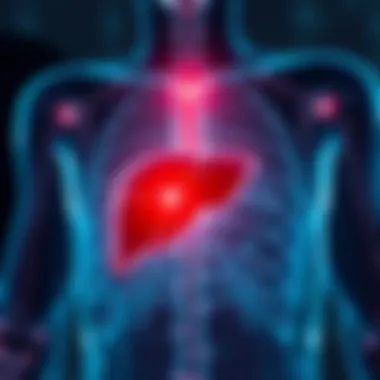
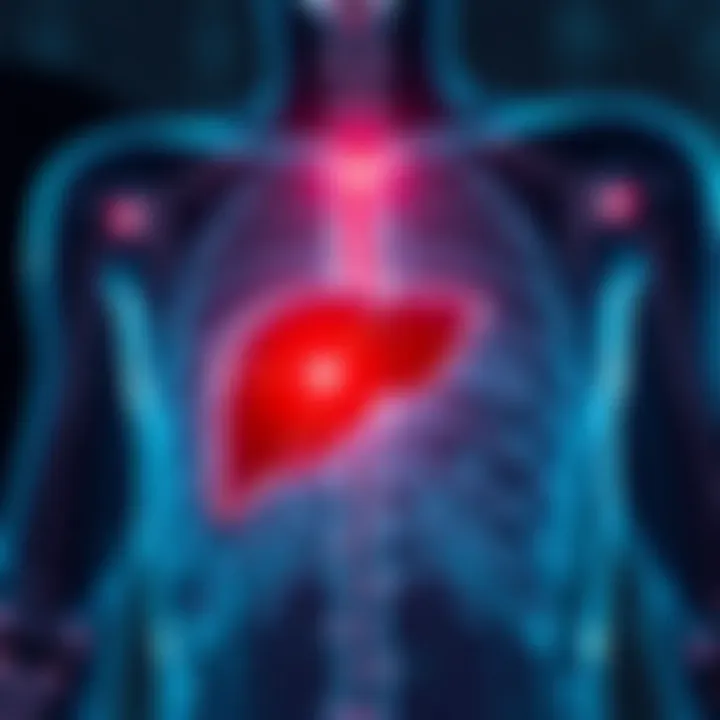
Effective management of liver spots often requires a blend of approaches, tailored to individual health needs and progression of the condition.
Through careful management and informed decision-making, individuals can navigate the complexities of liver spots and enhance their overall liver health.
Risks and Prognosis
The discussion surrounding liver spots extends far beyond mere identification; it delves into the potential risks those spots may carry and the consequent implications for a person’s overall health. Understanding these aspects is fundamental, especially for individuals navigating diagnosis and treatment options. Those spots might suggest benign conditions, but there is also the potential for serious liver-related issues. This section provides a thorough examination of possible complications and offers insights into the prognosis that comes with them.
Potential Complications of Liver Spots
Identifying a spot on the liver invites several considerations regarding its nature and the risk factors associated with it. Lets break down some of the potential complications:
- Malignancy Risk: Certain types of liver spots, particularly hepatocellular carcinoma, raise the alarm for potential cancer. This means regular monitoring and appropriate screening becomes crucial. Early detection is paramount, as remedies can be more effective when initiated promptly.
- Bleeding and Rupture: Some benign lesions, like larger liver cysts, may rupture or bleed, potentially leading to severe abdominal pain or even internal bleeding. Such incidents not only require immediate medical attention but can complicate the management of the underlying condition.
- Portal Hypertension: If liver spots are indicative of cirrhosis, complications may include portal hypertension—a condition where blood flow through the liver is restricted. This can lead to further complications such as ascites or even liver failure.
"Being aware of the potential complications of liver spots is essential for informed health decisions, as early intervention can significantly influence outcomes."
- Infection: During interventions to treat or manage liver spots, the risk of infection increases, especially if biopsies or surgeries are involved. This necessitates caution and awareness surrounding post-operative care.
By understanding these risks, individuals can engage in proactive discussions with healthcare providers, ensuring that they remain vigilant throughout the diagnosis and management process.
Understanding Prognosis
The prognosis concerning liver spots hinges on several factors, chiefly the nature of the spots themselves. An accurate prognosis often incorporates details such as size, type, and growth rate of the lesions, along with patient-specific factors like age and overall liver health.
- Benign vs. Malignant: For benign spots, such as hemangiomas or hepatic adenomas, the prognosis tends to be favorable; many individuals live without severe health consequences. In contrast, spots identified as malignant, especially in advanced stages, spell a more contentious outlook.
- Patient Health: Underlying conditions such as metabolic disorders or chronic liver diseases typically complicate prognosis. Their presence can influence the effectiveness of treatments and overall management strategies.
- Response to Treatment: The patient's response to therapy—be it surgical intervention or medication—plays a significant role in determining prognosis. Some individuals may fare well, experiencing regression of the spots, while others may encounter more significant challenges.
- Regular Monitoring: Continued surveillance through imaging and clinical evaluations significantly impacts prognosis. Regular follow-ups help in early detection of any variations in the condition, making timely interventions possible.
Patient Perspectives and Case Studies
Understanding the patient perspective is critical in any medical field, and liver health is no different. Patients often encounter numerous challenges, ranging from the initial shock of finding a liver spot to navigating the complex treatment options and emotional toll. These perspectives provide invaluable insights into the realities faced by those living with liver spots. Not only do they shed light on the human aspect of liver health, but they also help healthcare providers tailor treatments to individual needs.
Patient Experiences
Patients with liver spots often share their stories of confusion and concern. Many report discovering their spots incidentally during routine imaging for unrelated issues, which can trigger a rush of anxiety. They may find themselves lost in a whirlwind of medical jargon, grappling with terms like "benign" and "malignant." Common narratives include:
- Initial Shock: A diagnosis can leave patients reeling, leading to questions about what this means for their lives and overall health.
- Emotional Journey: Fear, denial, hope, and acceptance often intertwine as they seek clarity.
- Seeking Support: Many patients connect with support groups, either online or in person, where they can share feelings and advice with others in similar situations.
The role of family and friends cannot be underscored enough. Patients often cite the support from loved ones as essential during tough times. It’s common to hear of parents and partners stepping in to help articulate concerns in medical settings, making two-way conversations with doctors less daunting.
Lessons from Case Studies
Case studies provide powerful illustrations of the varying trajectories that individuals with liver spots can experience. They often highlight how different approaches can yield significant differences in patient outcomes. A few key insights from notable case studies include:
- Diverse Outcomes: Some patients with benign spots live healthy lives without treatment, while others have encountered aggressive forms of cancer, emphasizing the unpredictable nature of liver spots.
- Tailored Treatment Plans: A closer look at individual patient histories helps illustrate how personalized treatment plans can lead to better health outcomes. For example, a patient with a liver hemangioma may need only monitoring, whereas someone with hepatocellular carcinoma may require immediate intervention.
- Importance of Follow-Ups: Many cases underscore the significance of regular follow-ups, revealing that initial diagnoses can evolve, necessitating re-evaluation of treatment plans.
In summary, examining patient perspectives alongside case studies creates a richer understanding of the emotional and practical implications of liver spots. It opens a door to empathy, allowing healthcare professionals to connect on a deeper level and adjust their care approaches to better meet individual patient needs. This approach not only aids in healing the body but also nurtures the mind, which is equally important.
"Understanding the patient’s journey is not just about treating a disease; it’s about healing a life."
For further information related to liver health perspectives, please visit Mayo Clinic or refer to peer-reviewed studies available on PubMed for more in-depth insights.
Finale
In this article, we have journeyed through the intricate landscape of liver health, specifically focusing on the various spots that can appear on this crucial organ. Understanding these spots is not merely an academic exercise; it has real-world significance. Identifying the nature—whether benign or malignant—of liver spots can guide treatment decisions and influence a patient’s prognosis. It is vital to be aware of the symptoms associated with liver spots, like fatigue or abdominal pain, as these can signal the need for further medical evaluation.
Summarizing Key Points
To encapsulate the key takeaways:
- Liver spots, while often benign, can also be indicative of more serious conditions such as cancer.
- Accurate diagnosis requires a multi-faceted approach, combining medical history evaluation with advanced imaging techniques.
- Treatment varies widely, ranging from regular monitoring to surgical intervention, depending on the type and severity of the spot.
- Engaging in proactive liver health management—like maintaining a balanced diet and avoiding excessive alcohol—can help in mitigating risks associated with liver spots.
"When it comes to liver health, knowledge is not just power, it’s a lifeline."
These points emphasize the importance of awareness and vigilance regarding liver health, urging individuals to identify and act on troubling symptoms promptly. Regular check-ups and screenings can make all the difference in long-term outcomes.
Future Directions in Liver Health Research
Research into liver health is continually evolving, and understanding liver spots—ranging from benign lesions to malignant growths—is an area of significant interest. Future studies may focus on:
- Enhanced Imaging Technologies: Developing advanced imaging techniques that provide clearer and more precise evaluations of liver lesions.
- Genetic Research: Examining the genetic predispositions that lead to the development of certain liver spots.
- Targeted Therapies: Ongoing research into more effective treatments for malignant liver lesions, aiming to personalize therapy based on individual genetic and environmental factors.
- Preventative Strategies: Research into lifestyle or pharmaceutical interventions that can lower the risk of developing liver spots in at-risk populations.
As we continue to delve deeper into the mysteries surrounding liver health, it becomes increasingly clear that a greater understanding of liver spots holds the promise of better diagnosis, treatment, and ultimately, improved patient outcomes. Through dedication to research and awareness, we can equip ourselves with the tools necessary to not just react but act against liver diseases.



